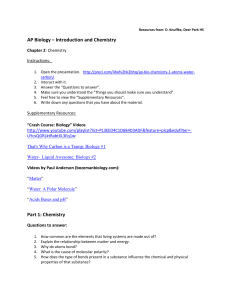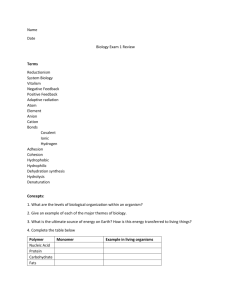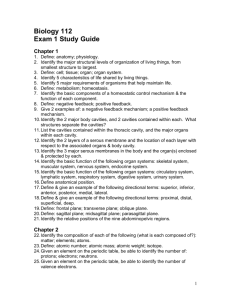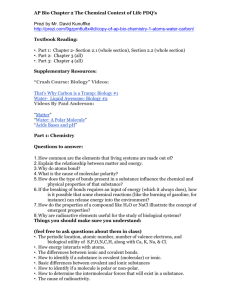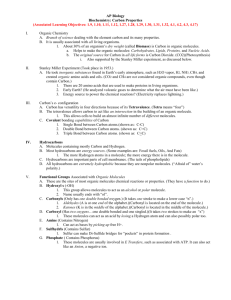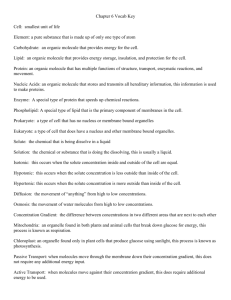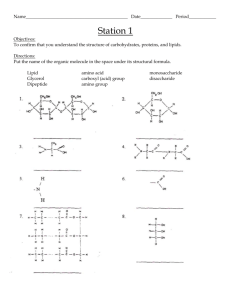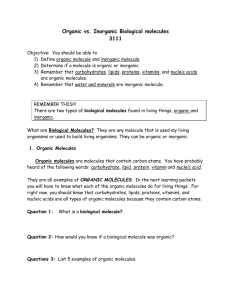molecule inorganic
advertisement
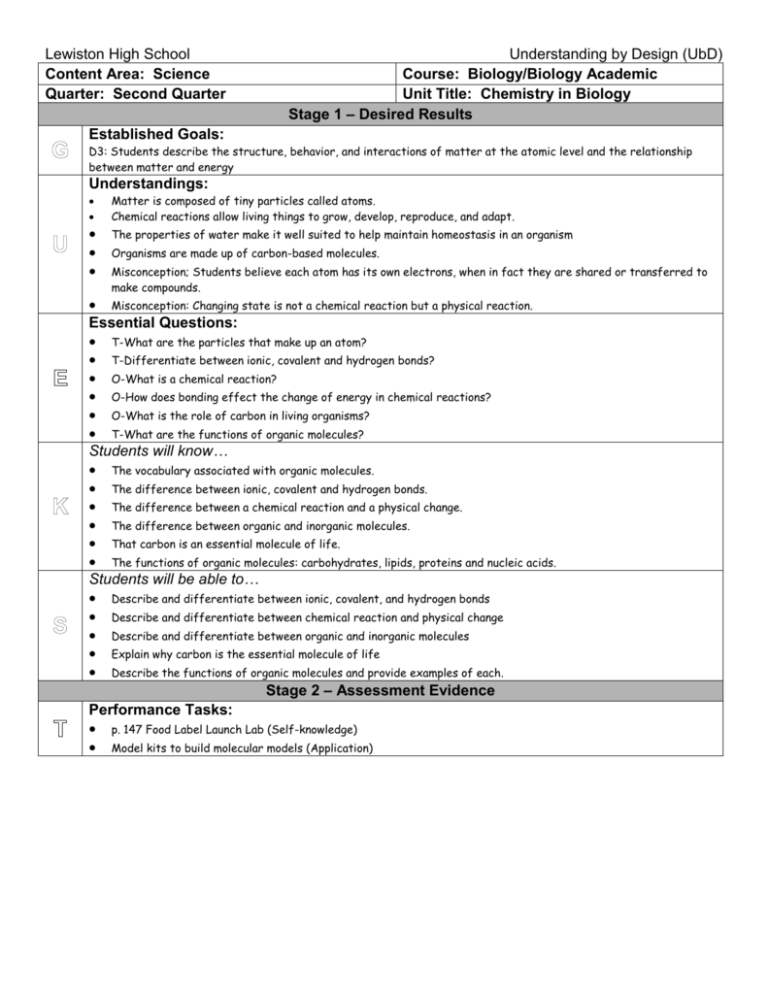
Lewiston High School Content Area: Science Quarter: Second Quarter Understanding by Design (UbD) Course: Biology/Biology Academic Unit Title: Chemistry in Biology Stage 1 – Desired Results Established Goals: D3: Students describe the structure, behavior, and interactions of matter at the atomic level and the relationship between matter and energy Understandings: Matter is composed of tiny particles called atoms. Chemical reactions allow living things to grow, develop, reproduce, and adapt. The properties of water make it well suited to help maintain homeostasis in an organism Organisms are made up of carbon-based molecules. Misconception; Students believe each atom has its own electrons, when in fact they are shared or transferred to make compounds. Misconception: Changing state is not a chemical reaction but a physical reaction. Essential Questions: T-What are the particles that make up an atom? T-Differentiate between ionic, covalent and hydrogen bonds? O-What is a chemical reaction? O-How does bonding effect the change of energy in chemical reactions? O-What is the role of carbon in living organisms? T-What are the functions of organic molecules? Students will know… The vocabulary associated with organic molecules. The difference between ionic, covalent and hydrogen bonds. The difference between a chemical reaction and a physical change. The difference between organic and inorganic molecules. That carbon is an essential molecule of life. The functions of organic molecules: carbohydrates, lipids, proteins and nucleic acids. Students will be able to… Describe and differentiate between ionic, covalent, and hydrogen bonds Describe and differentiate between chemical reaction and physical change Describe and differentiate between organic and inorganic molecules Explain why carbon is the essential molecule of life Describe the functions of organic molecules and provide examples of each. Stage 2 – Assessment Evidence Performance Tasks: p. 147 Food Label Launch Lab (Self-knowledge) Model kits to build molecular models (Application) Lewiston High School Understanding by Design (UbD) Content Area: Science Course: Biology/Biology Academic Quarter: Second Quarter Unit Title: Chemistry in Biology Other Evidence: Students will define the terms: atom, nucleus, proton, neutron, electron, element, isotope, compound, covalent bond, molecule, ion, ionic bond, van der Waals force, chemical reaction, reactant, product, activation energy, catalyst, enzyme, substrate, active site, polar molecule, hydrogen bond, mixture, solution, solvent, solute, acid, base, pH, buffer, macromolecule, polymer, carbohydrate, lipid, protein, amino acid, nucleic acid, nucleotide, monosaccharide, disaccharide, and polysaccharide (Explanation). Students will describe the different types of bonding, the reactants and products of a chemical reaction, the difference between organic and inorganic molecules, and why carbon is the essential molecule of life (Application). Students will describe the functions of organic molecules and provide examples on homework and worksheets (Application). Quiz-vocabulary & concepts (Evaluate). Stage 3 – Learning Plan Learning Activities: Pencil vs. Pretzel carbohydrate demonstration (H). PowerPoint Presentations, see websites from current teacher (W). Worksheets: Atoms, Elements and Compounds; Chemical Reactions; Water and Solutions; and Building Blocks of Life. (R) Concept Map and Study Guide: see Chapter 6 materials. (O) Food Label Launch Lab (E). Model Kits (O). Quiz-vocabulary & concepts, see Chapter 6 materials (E).
